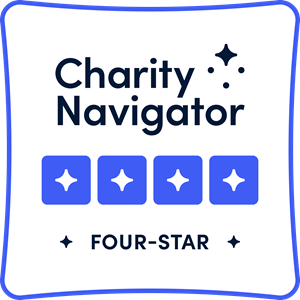From the Ashes, Hope Springs Eternal
North Bay Wildfire Relief
On a sunny day in December, lay leaders and professional staff representing the East Bay and San Francisco Jewish Federations’ North Bay Wildfire Recovery and Relief Task Force traveled to Santa Rosa to meet with Jewish community leaders in the region as they dust off the ashes and start rebuilding in the wake of one of the most devastating wildfires in California history.
The day was emotionally impactful and eye-opening, as they learned about the enormity of the needs and the remarkable efforts already underway to support community recovery. While the urgency of the disaster has passed, the full physical, financial and emotional impact of the fires continues to unfold. Rebuilding and recovery efforts are expected to take a minimum of five to seven years, with the emotional toll anticipated to increase over time.
The Fire, in their Own Words
Inside Santa Rosa’s Congregation Beth Ami, Task Force members gathered to participate in a “Lunch & Listen.” The Task Force listened intently, their eyes and ears transfixed on the local rabbis, synagogue presidents, and professional staff of Jewish Family and Children’s Services and Sonoma Recovers – Commonweal as they got up, one by one, to share stories about the fire.

“Several of our members experienced pounding on the door in the middle of the night, and their neighbors said, ‘Get up. Get out now,'” said Tony Rollins, President of Sonoma’s Congregation Shir Shalom. “We have one member who’s a Holocaust survivor, 80 years old. Her neighbor pounded on the door until she woke up, telling her, ‘You’ve got to get out. Now.’ She drove to the Sonoma Valley High School, then to San Francisco, where she found a place with her daughter.”
“It’s intense,” said Rabbi Mordecai Miller of Congregation Beth Ami. “[A Member] almost lost his home. He wouldn’t say that, but his home got singed. His animals barely made it out alive.”
“Go around the table, ask the people that live here,” he continued. “We all have this story.”
Nancy Masters, Associate Director of Jewish Family and Children’s Services, described the resources that they are providing to help the community regain normalcy – and how this means something different for each family. The physical, financial, social, and mental health needs are vast and varied. Many of those who have suffered the greatest loss don’t have insurance or are under-insured, housing insecurity is stressful and unsettling, and while most have found temporary solutions they will soon need to identify a long-term plan.
The emotional impact was pervasive. Amid the seriousness permeating the hour-long conversation, Rabbi Miller passed around a symbol of hope: a brass menorah found in a congregant’s burned-down house. It had been warped and completely oxidized by the searing temperatures, but retained its shape.

Chanukah is the Festival of Light, a holiday about bringing light to darkness, about miracles making our light last longer. When we use the menorah on Chanukah, we celebrate the rededication of the Temple in Jerusalem, and of our own sacred spaces. The symbolism of this menorah surviving the fires captures the message of Chanukah and the strength of the North Bay community.
The Needs of the Most Marginalized
The Task Force was also led on a tour of the Jewish Community Free Clinic, whose patient base is mostly uninsured, with a high percentage of undocumented individuals. They were disproportionally affected by the disaster.
The Free Clinic will serve anybody who comes to them for care. This openness—along with free care and partnerships with other local clinics—has led the clinic to primarily serve the most marginalized members of the community.
“What’s the real booster of the economy [in Sonoma & Napa Counties]?” asked clinic Executive Director Donna Waldman, rhetorically. “It’s the wineries, right? [Undocumented workers] are the ones picking the grapes. [And] what has become really clear to me is how close every last one of those people probably are to homelessness.”

Amidst the Wreckage, Hope Shines Through
The tour of Camp Newman capped what was already a solemn and emotional trip with a much more personal display of destruction. Many in the group either sent their kids to camp at Newman or had been to programs at camp themselves. The sense of loss was palpable.
“That first day we finally got up here and I walked onto the property, the most haunting part was driving up the first five miles [approaching camp] and seeing only chimneys,” recounted Ruben Arquilevich, Camp Newman’s Executive Director, who led the tour. “That actually prepared me to come into the property. Most of our buildings are completely gone, except our yurts and our pool.”
Camp Newman lost over 90% of its structures in the flames. But there was hope amidst the wreckage—the huge, wooden Star of David on the nearby hillside, surrounded by red-hot flames, did not catch fire. Sure enough, there it was, standing triumphantly amid the charred landscape, a picture-perfect metaphor of the community’s resilience in the face of total devastation.
“The Star of David was shining through the smoke,” said Arquilevich. “Everywhere you looked was just horrendous devastation, with the Star of David shining above that. The image went viral; it has become a symbol of hope and resilience, not only for Judaism, but also so many faiths and the universal values that have spoken to so many people.”

The Long Road Ahead
In order to continue with the recovery process, the North Bay needs support. At the Beth Ami roundtable, rabbis and community leaders made clear the urgent and ongoing need for relief—not just now, but months and likely years into the future. The Jewish Community Free Clinic, for example, is trying to accommodate an increased volume of medical visits not seen in over a decade with a limited pool of funds.
Furthermore, as the community’s needs increase, media attention and volunteerism decrease. Community representatives unanimously expressed concern because of the precipitous drop in volunteer interest, only a few months after the fires. At the same time, while media attention has almost completely moved south to the fires surrounding Los Angeles and San Diego, the North Bay still has pressing and enduring needs, as residents slowly come out of crisis mode and come to grips with the magnitude of the tasks ahead of them.
“We feel like the impact isn’t even really fully realized yet; that over time, people are sort of starting to start feeling again,” said Masters. “And then they’re starting to feel the trauma.”
“Our concern right now is sustainability for the long term, because this is going to continue for many more months,” said Oren Slozberg, Executive Director of Commonweal.
“It’s intense. It’s really hard,” said Rollins, echoing Slozberg’s sentiment. “And as far as we can tell, it’s going to be this way for a long time.”

Jay Rooney is a copywriter and content strategist at the Jewish Federation of the East Bay.
You can help these communities directly by donating to the Federation's North Bay Wildfire Emergency Fund. 100% of the funds raised will be deployed in the fire-ravaged region.


